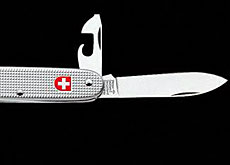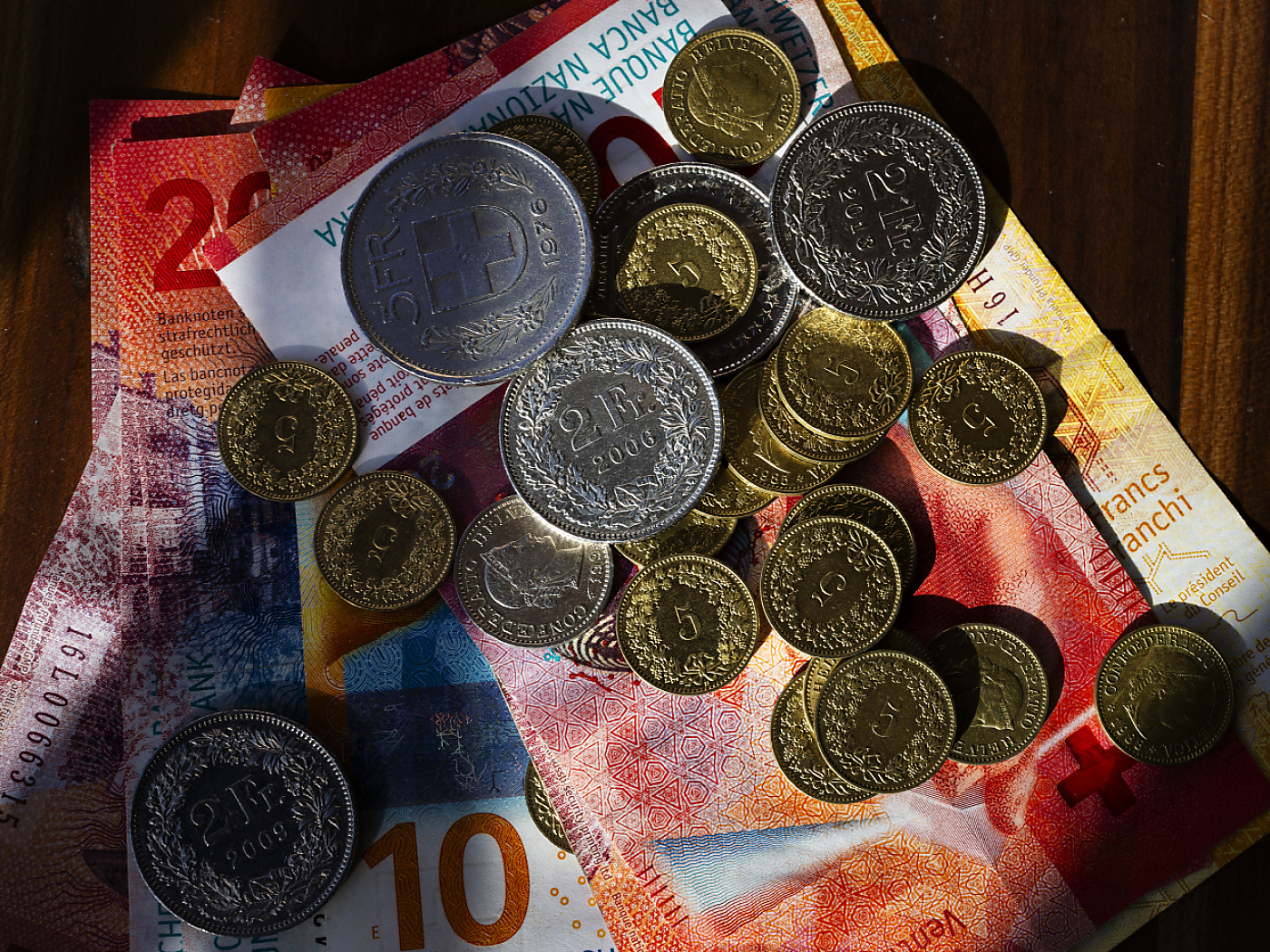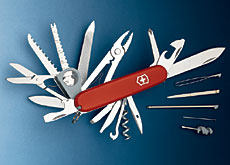Swiss army orders fewer knives

The two official makers of the Swiss Army knife sell millions around the globe every year but Switzerland’s armed forces buy only a tiny fraction of their production.
The Wenger company of Delémont and Victorinox in canton Schwyz would have long gone bankrupt if they had had to rely on orders from the defence ministry.
“We still supply the army but times have changed. The Swiss army is much smaller than it used to be, so right now it has more than enough in stock,” Wenger spokesman Thomas Schlapbach told swissinfo.
At one time, Wenger and Victorinox were each supplying 40,000 knives a year to the Swiss army. Today, orders have dwindled to next to nothing.
“In the past, it was maybe a one-day production run; today, I would guess it’s a two-hour production run, not more,” added Schlapbach.
Far cry
It’s all a far cry from the late 19th century when the German cutlery centre of Solingen was producing a pocket knife for the Swiss army. Switzerland did not have an equivalent at that time.
In 1886 the Swiss army decided to equip every solider with a knife. It was a one-bladed tool that formed part of a collection of utensils designed for the soldier and his equipment. There was also a screwdriver to dismantle the service rifle.
But three years later, a new model of military rifle was introduced and the authorities decided to group all the tools in one unit.
It had to have a blade, a point, a screwdriver and – as the use of tinned food had been introduced – a tin opener.
This was the 1890 model of the knife, which like its predecessor was ordered from Germany because it could not be mass produced in Switzerland.
Cutler Elsener
That changed when a Swiss cutler, Karl Elsener, took up the challenge of supplying the Swiss army. Elsener, who had been trained in Paris and in the German town of Tuttlingen, had founded a knife factory at Ibach near Schwyz in 1884. It later became Victorinox.
In 1891 he set up the Association of Swiss Master Cutlers, with the main aim of producing a pocket knife for the Swiss army in Switzerland. The first knives for the Swiss army were delivered in October the same year.
The real breakthrough came when Elsener developed a more elegant version of the soldier’s knife, which he called the “Swiss Officer’s knife”.
With the new knife, he added a second, smaller blade, sometimes called the erasing blade, and a corkscrew. And he replaced the old wooden handle, which had a tendency to split, with a far harder and resistant material.
It featured only two springs for six blades and is now universally known as the Swiss Army knife.
Wenger, founded in 1893, also became a supplier of the knives, with the first order in the company’s archives dating back to 1901, although other orders might go back further.
Not red
Times have changed but the Swiss army still issues a pocket knife to recruits, with Wenger and Victorinox sharing the orders between them. The knife is not the distinctive red of the majority of Swiss Army knives.
“It’s a knife with anodised handles, six different functions and, of course, on the top of the handle is the Swiss cross. What’s special about it is that it’s the same knife for both normal soldiers and officers,” explained Wenger’s Schlapbach.
He added that the two companies had a “friendly rivalry”.
“Of course, there is business competition, but we are in a kind of special situation,” said Schlapbach.
“If you take watches, there are hundreds of different suppliers worldwide. With the Swiss Army knife, there are only two.”
swissinfo, Robert Brookes in Delémont
The army knife supplied to Swiss soldiers is distinctive in that it has anodised handles. It features the Swiss cross on the handle.
Wenger and Victorinox share orders from the Swiss army.
Victorinox, Europe’s largest cutlery manufacturer, has about a 70% market share in Swiss Army knives, while Wenger has the remaining 30%.
Wenger and Victorinox are the only two companies legally allowed to produce Swiss Army knives.
Illegal copies are common in the United States.
After the 2001 terrorist attacks in the US, the companies lost between 15% and 20% of turnover as business at duty-free outlets slumped. The knives were no longer allowed in hand luggage on planes.

In compliance with the JTI standards
More: SWI swissinfo.ch certified by the Journalism Trust Initiative











You can find an overview of ongoing debates with our journalists here . Please join us!
If you want to start a conversation about a topic raised in this article or want to report factual errors, email us at english@swissinfo.ch.